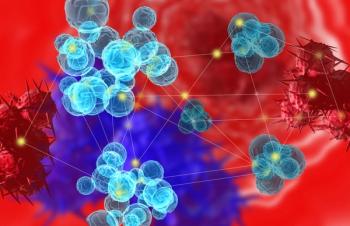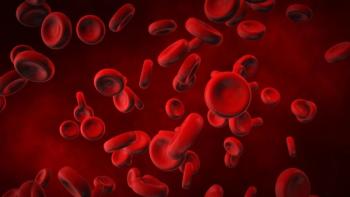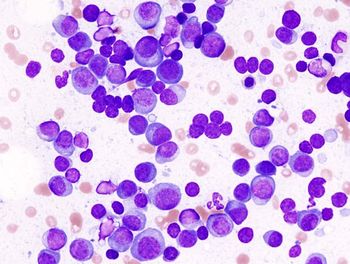
Managing Neurotoxicity Associated with Bispecifics in MM
A comprehensive discussion on managing neurotoxicity associated with bispecific antibodies in multiple myeloma.
Episodes in this series

Transcript:
Saad Z. Usmani, MD, MBA, FACP: As we know, Dr Tan mentioned that we are seeing some delayed neurotoxicities of various kinds, including neurocognitive sensitive neuropathy. With the BCMA [B-cell maturation antigen]-directed treatments, I think spacing out the dosing schedule once patients get a response is keen on everyone’s mind. In fact, even for some of the clinical trials that are moving these bispecific into earlier lines of treatment, the schema of treatment is a little different compared with the original phase 1 or 2 studies that have been done in the more relapsed/refractory patients. So maybe, Michael, you can tell us a little bit about the neurologic AEs [adverse events] being observed with BCMA-directed treatments, including CAR [chimeric antigen receptor] T-cell therapies. And maybe if we do not come up with a mitigating strategy to lessen the burden of patients coming in for treatment, we might see these with bispecifics as well.
Michael Scordo, MD: Absolutely. The correlate would be CAR T cells, where we have BCMA-directed GPRC5D [G protein-coupled receptor class C group5 member D] and others coming in the pipelines. And there have been reports of delayed toxicity in the literature and studies. We know about ICANS [immune effector cell-associated neurotoxicity syndrome], the sort of acute neurotoxicities that can occur after these therapies, but there are some more concerning delayed effects like neuropathy or Parkinson-like features that patients can rarely get. And even from the lymphoma side, this is something being studied now, this idea of subclinical neurocognitive changes that can occur and really may only be brought out if you do very specific neurocognitive testing. Maybe when you’re speaking with these patients, they may not even be cognizant of some of these changes, or maybe their family may be cognizant, but they may not be.
This speaks to the idea of longitudinal follow-up that’s going to be critical in these patients. Because oftentimes in the studies, we’re seeing the early adverse effects that are being reported. But I think longitudinal long-term follow-up is going to be critical to understanding the real incidence of these adverse effects. We may not have the best treatments initially, but perhaps we can figure out which patients are at the highest risk for these complications, which may help our strategies in the future.
Saad Z. Usmani, MD, MBA, FACP: That’s important. And talking about different targets, with GPRC5D, early data were reported and published in the New England Journal of Medicine a couple of months ago with the GPRC5D bispecific antibody, and skin and nail changes are commonly seen, along with dysgeusia. For patients who already have preexisting low-grade neuropathy from previous treatments, having those skin and nail changes and probably make matters worse for their neuropathy as well. So early recognition is certainly the key. Anna, if you’re getting a phone call from a patient with these symptoms, what would be the framework in your mind as you’re evaluating these patients and asking them questions?
Anna Howard, RN: When they call with these symptoms, a good thing to ask is obviously when it started, how long it’s been going on, and then the extent of the severity of it. I know with the case we just talked about, especially with the burning at night, it would be important to notify patients that burning is a later sign in these and so they should be especially aware if it progresses in that way. And something from a nursing perspective that we’re always concerned about is the effect on their daily living. And especially a lot of our patients in this case are already a pretty high fall risk, so then if they’re having these worsening neuropathies as well, that’s something that we’re always concerned about—how it’s affecting their gait and their ability to move safely in their home. And how this is affecting their quality of life, too, is especially important to manage for their ability to be safe at home. And if they need their dexterity or things like that for their job or their daily living, maybe treat that a little bit more aggressively than we would for some of the other people, where they feel like they can still manage their life well with the low-grade neuropathy.
Saad Z. Usmani, MD, MBA, FACP: Dr Tan, if this patient were to present in your clinic on a commercial GPRC5D or commercial FcRH5 [Fc receptor-like protein 5] bispecific and had presented with these symptoms, would you have considered interrupting treatment for a longer duration, knowing that these bispecifics have a long half-life and this is a patient who’s responding? Or would you have gone with less frequent dosing off the bat? There’s no right answer. I’m just putting this out there.
Carlyn Tan, MD: I would discuss it with the patient. If they’d been responding well, I think it would make sense to hold the therapy for some period of time with close monitoring of the symptoms as well as their response to treatment. And make sure that their symptoms are improving and have more aggressive supportive treatment. I’m not sure we could also consider a dose reduction if he were to start back on treatment after holding it for a period of time.
Saad Z. Usmani, MD, MBA, FACP: And that dose reduction has not been clearly studied in the clinical trials so far. So that’s something that can be brought up as we’re developing newer clinical trials. Would this also be an opportunity for a multidisciplinary approach? Do we need to get neurology or dermatology involved for these kinds of patients in improving patients’ quality of life? What are your thoughts, Dr Scordo?
Michael Scordo, MD: I think that’s absolutely critical. Just borrowing from what we learned from the initial CAR-T cell studies, for example, in lymphoma, based on what we were seeing in the clinic, after these drugs were available commercially, we started to partner with our colleagues in neurology, etc., to open up studies trying to look at these issues longitudinally and study them to develop future treatment strategies. The other folks I’m thinking about in the context of dysgeusia and skin changes are dermatology colleagues. We’re blessed at MSK [Memorial Sloan Kettering Cancer Center in New York, NY] to have a wonderful onco-dermatologist who sees many of our patients. I believe that we’re going to start to rally around each other to really come together to have a more multidisciplinary approach for following these patients.
Saad Z. Usmani, MD, MBA, FACP: That’s extremely important.
Transcript edited for clarity.
Newsletter
Stay up to date on recent advances in the multidisciplinary approach to cancer.




















































































